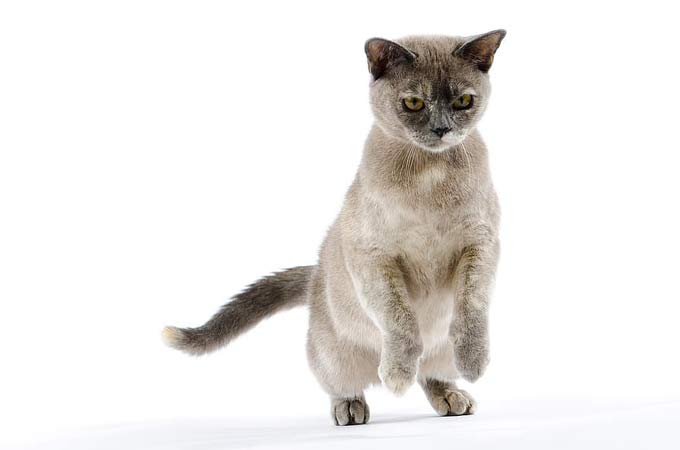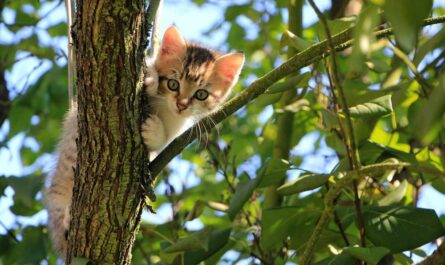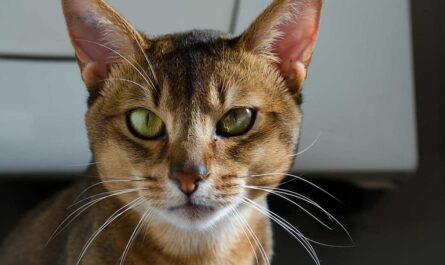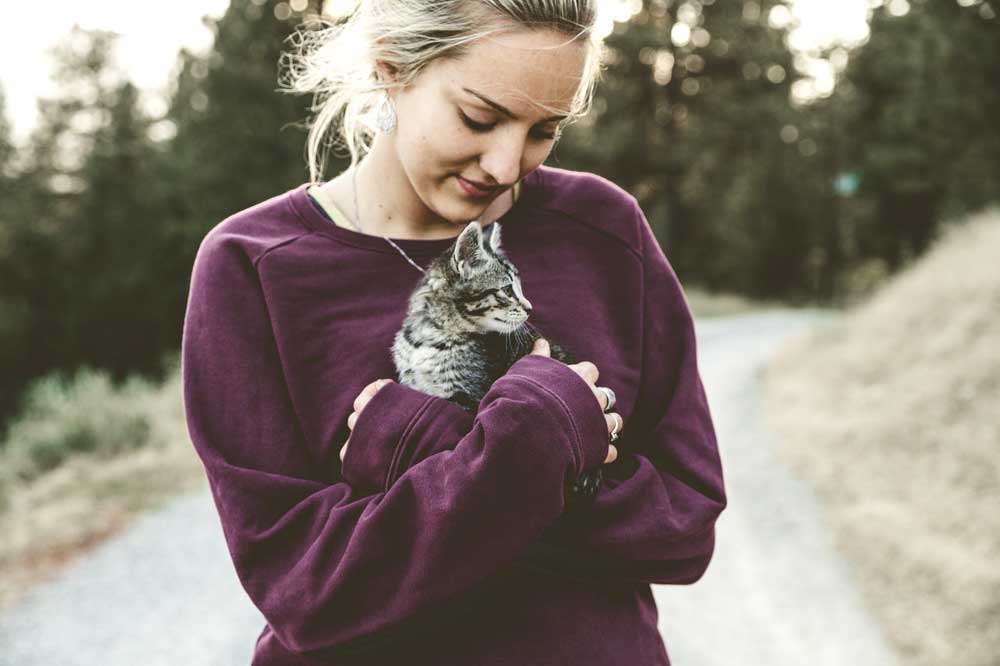Reasons why do cat tails shake or quiver? Observing a cat’s tail can reveal a lot about its mood and intentions. Cats communicate through various body signals, and tail movements are among the most expressive. Understanding why a cat’s tail shakes or quivers is essential for cat owners to interpret their pet’s behavior accurately. From excitement to fear, each movement holds significance. Let’s delve into the intricacies of these tail tremors to decipher what your feline friend might be trying to convey.
Reasons Why Do Cat Tails Shake or Quiver
Decoding the reasons behind a cat’s tail shaking or quivering requires a nuanced understanding of feline behavior and communication. From emotional expression to practical functions like temperature regulation, each tail movement conveys valuable information about a cat’s state of mind and physical well-being. By observing these subtle cues and responding with sensitivity and care, cat owners can nurture a deeper connection with their beloved pets and ensure their overall happiness and health.
1. Emotional Expression
A cat’s tail serves as a dynamic instrument of emotional expression, eloquently conveying its inner state through subtle movements and gestures. When a cat is content or at ease, its tail may exhibit a gentle shake, reminiscent of a tranquil breeze swaying through the trees. This rhythmic swaying signifies a state of relaxation and contentment, a harmonious reflection of the peace and comfort that permeates its being. However, when excitement or anticipation takes hold, the tail’s movements may intensify, culminating in rapid quivering akin to the fluttering wings of a bird in flight. This heightened agitation suggests a surge of energy and enthusiasm, perhaps spurred by the prospect of a forthcoming meal or the anticipation of playtime adventures.
Tranquil Relaxation: A gentle shake of the tail serves as a serene symphony of contentment, signaling a state of tranquil relaxation and happiness. As the tail sways rhythmically back and forth, it mirrors the cat’s inner sense of peace and well-being, creating an aura of warmth and harmony in its presence.
Eager Anticipation: A rapid quiver of the tail speaks volumes of the cat’s eager anticipation and excitement. Like a coiled spring ready to unleash its energy, the tail’s frenetic movements reflect the cat’s heightened arousal and enthusiasm, brimming with anticipation for the adventures that lie ahead.
2. Social Interaction
In the intricate dance of social interactions, a cat’s tail emerges as a versatile tool for communication, conveying a kaleidoscope of messages to its fellow felines and human companions alike. During encounters with other cats or humans, the tail’s movements take on nuanced meanings, offering insights into the cat’s intentions and emotions. A subtle tremor of the tail may signal a friendly disposition and a willingness to engage, serving as a gentle invitation to interaction and camaraderie. Conversely, when the tail quivers with greater intensity, it may betray signs of overstimulation or nervousness, particularly when accompanied by flattened ears or dilated pupils. In such instances, the cat’s tail acts as a beacon of caution, warning of potential discomfort or unease, and prompting a thoughtful approach to ensure mutual understanding and respect.
Friendly Invitation: A slight tremor of the tail extends an olive branch of friendship and camaraderie, signaling the cat’s openness to social interaction and engagement. This gentle wag serves as a warm invitation, inviting others to join in the dance of companionship and shared experiences.
Cautionary Signal: Vigorous shaking of the tail, especially when accompanied by flattened ears or dilated pupils, serves as a cautionary signal of potential overstimulation or unease. In such moments, the cat’s tail acts as a barometer of discomfort, urging a mindful approach to ensure the preservation of mutual trust and respect in social interactions.
3. Hunting Instincts
Embedded deep within a cat’s genetic blueprint lies the primal instinct of the hunter, and their tails serve as invaluable tools in the pursuit of prey. As a cat stealthily stalks its quarry, its tail assumes a vital role in maintaining balance and focus, ensuring utmost precision and agility in the hunt. A subtle shake of the tail serves as a testament to the cat’s acute awareness and readiness, as it navigates its surroundings with calculated grace and poise. This rhythmic movement, akin to a conductor’s baton guiding an orchestral masterpiece, primes the cat for the decisive moment of pouncing with unwavering accuracy and efficacy.
Balancing Act: In the delicate dance of the hunt, a cat’s tail functions as a counterbalance, aiding in maintaining equilibrium and stealth as it closes in on its prey. The subtle shake of the tail serves as a silent symphony of coordination, ensuring that every movement is executed with precision and grace.
Focused Precision: As the cat’s tail quivers with anticipation, it attests to the feline’s unwavering focus and determination, honed to a razor’s edge in pursuit of its quarry. With every twitch and tremor, the cat’s readiness intensifies, poised to unleash its full potential in the decisive moment of the hunt.
4. Sensory Exploration
In the labyrinth of sensory exploration, a cat’s tail emerges as a versatile instrument of perception, akin to a delicate antenna tuned to the nuances of its environment. When confronted with unfamiliar objects or surroundings, the cat’s tail engages in a subtle dance of movement, trembling as it gathers information through touch and tactile sensation. This behavior serves as a crucial strategy for assessing potential threats and adapting its approach accordingly, allowing the cat to navigate unfamiliar terrain with confidence and caution.
Antennae of Perception: Like a periscope probing the depths of the unknown, a cat’s tail serves as a sensory organ of unparalleled sensitivity, attuned to the subtlest changes in its surroundings. As it trembles and shakes in response to new stimuli, the tail gathers vital information, providing the cat with essential insights into potential threats and opportunities.
Adaptive Response: The quivering of the tail reflects the cat’s adaptive prowess, as it utilizes sensory exploration to decipher the intricacies of unfamiliar environments. Through this dynamic process of information gathering, the cat hones its instincts and refines its approach, ensuring that it navigates with confidence and poise in the face of uncertainty.
5. Temperature Regulation
Amidst the ebb and flow of environmental conditions, a cat’s tail serves as a versatile instrument of adaptation, adept at regulating body temperature to ensure optimal comfort and well-being. In the sweltering heat of summer, when the sun beats down with relentless intensity, cats may resort to tail shaking as a pragmatic strategy for dissipating excess heat. Much like how they pant or seek out shaded retreats to stay cool, the rhythmic tremors of their tails serve as a natural mechanism for promoting heat loss and maintaining thermal equilibrium. Conversely, when faced with the biting chill of winter’s embrace, tail tremors take on a different role, serving to stimulate circulation and promote warmth. Through these subtle movements, cats navigate the ever-changing tapestry of temperature fluctuations, ensuring their resilience in the face of nature’s capricious whims.
Heat Dissipation: In scorching temperatures, tail shaking serves as a vital tool for dissipating excess heat, allowing cats to stay cool and comfortable amidst the oppressive heat. Through rhythmic movements, they facilitate the dispersal of warmth, ensuring their well-being even amid sweltering conditions.
Cold Weather Adaptation: In the icy grip of winter, tail tremors take on a new significance, serving to stimulate circulation and promote warmth. Through subtle movements, cats enhance blood flow to their extremities, warding off the chill and maintaining thermal equilibrium in the face of plummeting temperatures.
6. Playful Behavior
In the whimsical realm of play, a cat’s tail emerges as a dynamic expression of exuberance and joy, imbued with the boundless energy and enthusiasm that define their playful nature. When engaged in interactive games with toys or fellow companions, cats often exhibit exuberant tail movements, characterized by rapid quivers and joyful flicks. This animated display serves as a vibrant manifestation of their playful spirit, conveying excitement and enjoyment in the shared experience of play. With each tremor of their tail, cats immerse themselves fully in the moment, reveling in the thrill of the chase and the camaraderie of shared adventures.
Manifestation of Joy: A quivering tail is a vibrant testament to a cat’s joy and enthusiasm during playtime. With each animated movement, they express their delight and excitement, fully immersed in the exhilarating experience of interactive games and shared camaraderie.
Engagement and Enthusiasm: The animated movements of a cat’s tail serve as a dynamic reflection of their engagement and enthusiasm for play. Through joyful flicks and lively quivers, they convey their boundless energy and zest for life, infusing every moment with a sense of playful exuberance and shared joy.
7. Warning Signs
In the intricate tapestry of feline communication, tail shaking can serve as a subtle yet poignant indicator of a cat’s emotional state, offering valuable insights into its inner turmoil and distress. In certain situations, rapid twitches of the tail may signify discomfort or agitation, serving as a silent warning of impending conflict or aggression. When accompanied by tense body posture and flattened ears pressed tightly against the head, these subtle cues paint a vivid portrait of the cat’s escalating unease and potential readiness to defend itself. Understanding and respecting these warning signs is essential for fostering mutual understanding and avoiding potential conflicts, allowing for harmonious interactions and nurturing a sense of trust and safety in the feline-human relationship.
Indicators of Agitation: Rapid tail twitches, particularly when accompanied by tense body posture and flattened ears, serve as warning signs of agitation or distress in cats. These subtle cues convey the cat’s escalating unease and potential readiness to defend itself if the situation escalates further.
Avoiding Conflicts: By recognizing and respecting these warning signs, individuals can navigate interactions with cats more effectively, minimizing the risk of conflicts and fostering a sense of mutual understanding and trust. This mindful approach promotes harmonious relationships and ensures the well-being of both humans and feline companions.
8. Medical Issues
While tail shaking is a normal behavior in many instances, persistent or unusual tremors may serve as red flags for underlying medical issues that warrant further investigation and attention. In cases where tail shaking is accompanied by additional concerning signs, such as lethargy, loss of appetite, or changes in behavior, it is imperative to seek prompt veterinary care for a comprehensive evaluation and appropriate treatment. Tail shaking can be indicative of various medical conditions, including neurological disorders, musculoskeletal injuries, or pain, underscoring the importance of a thorough assessment by a qualified veterinarian to address any potential health concerns and ensure the well-being of the cat.
Symptom of Underlying Issues: Persistent or unusual tail shaking may serve as a symptom of underlying medical issues, necessitating veterinary evaluation and intervention. By recognizing these signs and seeking timely medical care, individuals can ensure the prompt diagnosis and treatment of any potential health concerns, safeguarding the welfare of their feline companions.
Promoting Wellness: Maintaining regular veterinary check-ups and promptly addressing any concerning signs or symptoms can help promote the overall health and well-being of cats. Through proactive healthcare management and attentive monitoring, individuals can provide their feline companions with the support and care they need to thrive and lead happy, healthy lives.

9. Territorial Marking
In the intricate dance of feline territoriality, tail shaking emerges as a strategic maneuver for asserting ownership and delineating boundaries within their domain. Cats possess scent glands located at the base of their tails, which they utilize to deposit scent markers on objects and other animals through rubbing and vigorous shaking of their tails. This ritualistic behavior serves as a potent form of communication, effectively broadcasting messages of territorial ownership and dominance to potential intruders and rivals. By dispersing scent markers with each rhythmic shake of their tails, cats establish a tangible presence within their environment, reinforcing their territorial claims and signaling their readiness to defend their turf against perceived threats.
Scent-Based Communication: Tail shaking facilitates the dissemination of scent markers, allowing cats to assert their territorial dominance and communicate ownership within their environment. This ritualistic behavior serves as a potent form of olfactory communication, effectively conveying messages of territoriality and dominance to other animals in the vicinity.
Establishing Boundaries: Through the strategic deposition of scent markers, cats establish clear boundaries and demarcate their territory, signaling to potential intruders the limits of their domain. Tail shaking serves as a ritualistic gesture of ownership and control, reaffirming the cat’s presence and readiness to defend its turf against perceived threats.
10. Anxiety and Stress
In the complex tapestry of feline emotions, anxiety and stress can cast a shadow of unease and discomfort upon even the most resilient of cats. Tail shaking, particularly when accompanied by other telltale signs such as excessive grooming or avoidance behavior, may serve as a silent beacon of distress, signaling the presence of underlying stressors that warrant attention and intervention. Whether triggered by changes in the environment, social conflicts, or medical issues, anxiety and stress can manifest in various forms, impacting the cat’s well-being and quality of life. By recognizing these subtle cues and addressing the root causes of anxiety and stress, individuals can provide their feline companions with the support and care they need to navigate life’s challenges with resilience and grace.
Manifestation of Distress: Tail shaking, when accompanied by other signs of anxiety such as excessive grooming or avoidance behavior, may serve as a silent indicator of underlying stressors impacting the cat’s well-being. These subtle cues convey the cat’s inner turmoil and discomfort, prompting a compassionate response from caregivers to alleviate their distress.
Addressing Root Causes: Understanding the triggers of anxiety and stress is essential for providing effective support and intervention. Whether stemming from environmental changes, social conflicts, or medical issues, addressing the root causes of stress can help restore balance and harmony to the cat’s life, promoting their overall well-being and resilience in the face of adversity.
11. Preparing to Sleep
In the tranquil moments preceding slumber, cats embark on a ritualistic journey of self-care and relaxation, culminating in a state of serene repose. As part of this grooming ritual, tail shaking emerges as a pivotal step in the feline’s quest for restorative rest and rejuvenation. Before settling down for a nap, cats engage in meticulous grooming rituals that often include rhythmic tail shaking. This behavior serves multiple purposes, including the removal of debris and dirt accumulated throughout the day and the redistribution of natural oils throughout their fur. By meticulously grooming themselves and shaking their tails in preparation for sleep, cats ensure maximum comfort and cleanliness, setting the stage for a peaceful and restful slumber.
Ritualistic Grooming: Tail shaking is an integral component of the cat’s pre-sleep grooming ritual, serving to remove debris and redistribute natural oils throughout their fur. This meticulous self-care regimen ensures maximum comfort and cleanliness, preparing the cat for a restorative rest.
Promoting Relaxation: Through the rhythmic movements of tail shaking, cats release tension and promote relaxation, ushering in a state of tranquility and serenity conducive to restful sleep. By engaging in these soothing rituals, cats prepare both body and mind for the rejuvenating embrace of sleep.
12. Age and Development
Tail shaking behaviors evolve and adapt alongside a cat’s age and developmental journey, reflecting the shifting landscape of their physical capabilities and accumulated experiences. In their formative years, kittens may exhibit more erratic and uncoordinated tail movements as they learn to navigate and control their burgeoning bodies. These playful tremors serve as a testament to their youthful exuberance and boundless energy, as they explore the world around them with wide-eyed wonder. As cats mature and transition into adulthood, tail shaking behaviors may become more refined and purposeful, reflecting their growing mastery of their physical form and grooming techniques. With each passing year, older cats may shake their tails with greater precision and intent, drawing upon a wealth of accumulated experiences to ensure optimal grooming and comfort. Through the lens of age and development, tail shaking behaviors serve as poignant markers of the cat’s growth and evolution, mirroring the ever-unfolding tapestry of their lives.
Youthful Exuberance: In their youth, kittens may exhibit more erratic and playful tail shaking behaviors as they explore and discover the world around them. These lively tremors serve as a testament to their boundless energy and curiosity, reflecting the exuberance of youth.
Mature Refinement: As cats mature and transition into adulthood, tail shaking behaviors become more refined and purposeful, reflecting their growing mastery of grooming techniques and physical control. With age comes a greater sense of precision and intent, as cats draw upon their accumulated experiences to ensure optimal comfort and cleanliness. Fitness – Meditation – Diet – Weight Loss – Healthy Living – Yoga
13. Communication with Humans
In the intricate dance of interspecies communication, cats leverage a myriad of subtle gestures, including tail movements, to convey their thoughts and feelings to their human companions. Tail shaking serves as a nuanced form of feline expression, offering valuable insights into the cat’s emotional state and intentions. By paying keen attention to the nuances of tail shaking alongside other body language cues, cat owners can deepen their bond with their pets and forge a deeper understanding of their needs and desires. Whether a gentle sway of contentment or a rapid tremor of agitation, each tail movement carries a wealth of meaning, inviting attentive observation and empathetic response from their human counterparts. Through this harmonious exchange of signals and responses, cats and their human companions cultivate a profound connection built on mutual understanding and respect, enriching their shared journey through life together.
Subtle Gestures of Expression: Tail shaking is one of many subtle gestures through which cats communicate with their human companions, offering valuable insights into their thoughts and emotions. By interpreting these signals alongside other body language cues, cat owners can deepen their understanding of their pets’ needs and forge a stronger bond based on mutual trust and empathy.
Deepening the Bond: Attentive observation of tail-shaking behaviors allows cat owners to cultivate a deeper bond with their pets, fostering a sense of connection and understanding that transcends language barriers. By responding empathetically to their cats’ subtle cues, humans can strengthen the foundation of their relationship, nurturing a bond built on mutual respect and companionship.
14. Individual Variation
In the tapestry of feline diversity, each cat emerges as a unique and multifaceted individual, endowed with its own distinctive personality, quirks, and preferences. Tail shaking behaviors, like many aspects of feline behavior, can vary significantly between individuals, reflecting the rich tapestry of their experiences and genetic makeup. Factors such as breed, upbringing, and past experiences shape how a cat expresses itself through its tail, imbuing each movement with a unique flavor and significance. Cat owners need to recognize and appreciate this individual variation, approaching their pets with an open mind and attentive curiosity. By embracing the diversity of feline expression and tail-shaking behaviors, cat owners can cultivate a deeper appreciation for their pets’ unique personalities and forge a more meaningful connection based on acceptance and understanding. Cat accessories on Amazon
Embracing Diversity: Tail-shaking behaviors vary widely between individual cats, reflecting the rich diversity of feline expression and experience. By embracing this diversity and appreciating the uniqueness of each cat, owners can cultivate a deeper understanding and appreciation for their pets’ individuality.
Attentive Observation: Attentive observation of tail shaking behaviors allows cat owners to gain insights into their pets’ personalities and preferences, fostering a deeper connection based on mutual understanding and acceptance. By celebrating the individuality of their cats, owners can enrich their relationships and create a nurturing environment that honors each cat’s unique identity.
Other Interesting Articles
- How to Help Your Cat Overcome Fears in 13 Strategic Steps
- 13 Easy Tricks To Teach Your Cat: Basic Feline Training Guide
- How To Train Your Cat: 15 Easy Steps To Teach New Things
- Why Do Cats Have Tails? 4 Fun Facts You Didn’t Know
- 16 Simple Ways To Establish A Stronger Bond With Your Cat
- How To Train Your Cat/Kitten To Sit: Steps, Command, Guide
- Cat Giving Birth: From Your Feline Pregnancy to Kitten Care
- Fading Kitten Syndrome: Age, Causes, Symptoms, Treatment
- Kitten Bottle Feeding: Chart, Tips, Recipe, Challenges, Guide
- Cat Pregnancy: Timeline, Signs, Labor, Behavior, Stages
- 16 Silent Killers of Cats Every Pet Owner Must Be Aware Of
- Do Mother Cats Discipline Their Kittens? A Guide To Owners
- How To Take Care of A Kitten 6 Weeks Old: A 7-Step Guide
- How To Tell If Your Cat is Trying to Hurt You: A To-Do Guide
- How To Tell If Your Cat Has Tapeworms: What You Can Do
- How To Tell If My Cat is in Pain After Neutering: What To Do
- How To Get A Cat To Trust You Fast: Signs, Tips, Techniques
- 12 Signs Your Cat is a Boy: Tips To Distinguish A Male Cat
- Single Kitten Syndrome: Age, Signs, Symptoms, Treatments
- How To Tell If Your Cat Can’t See Well: What You Can Do



